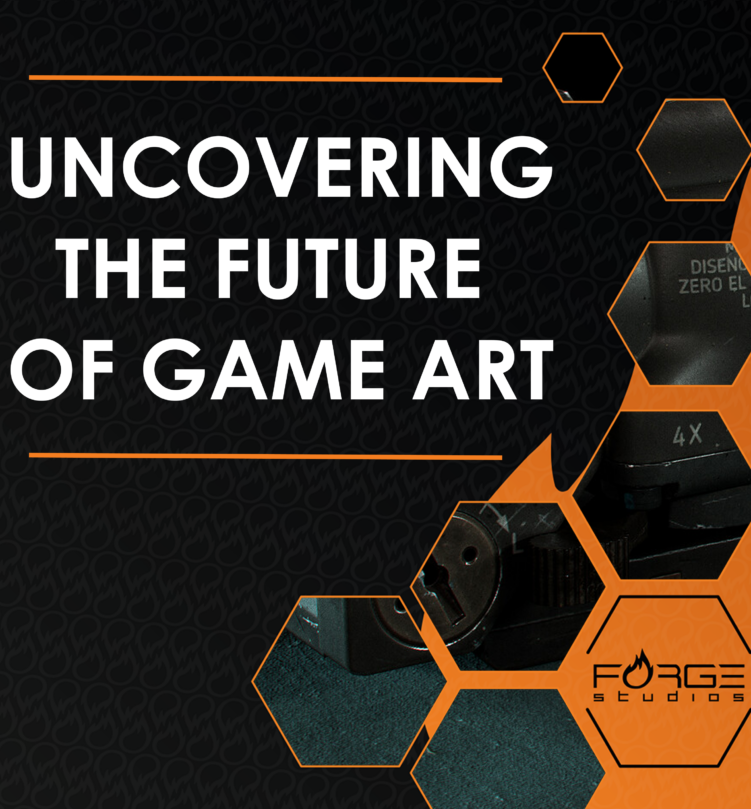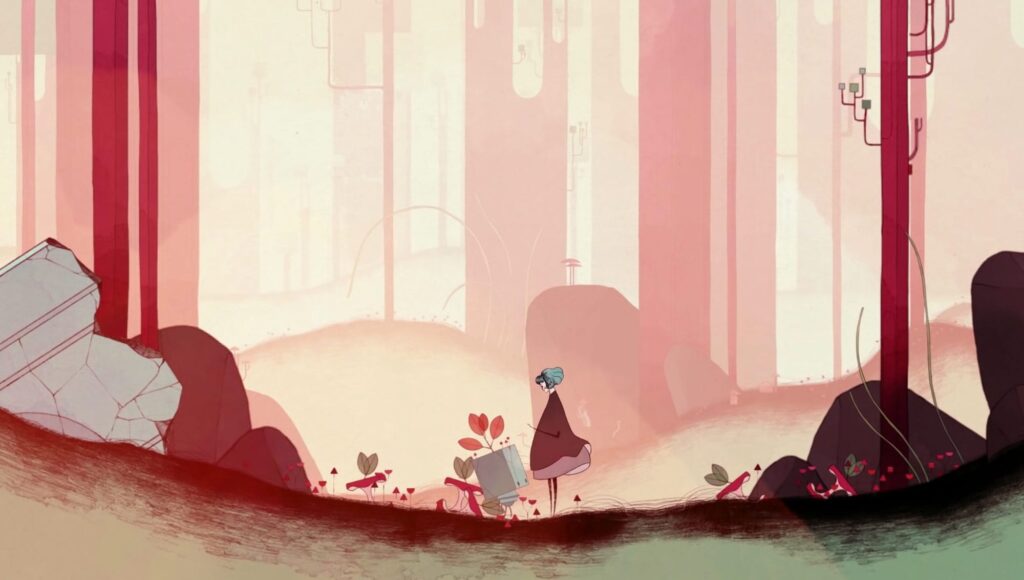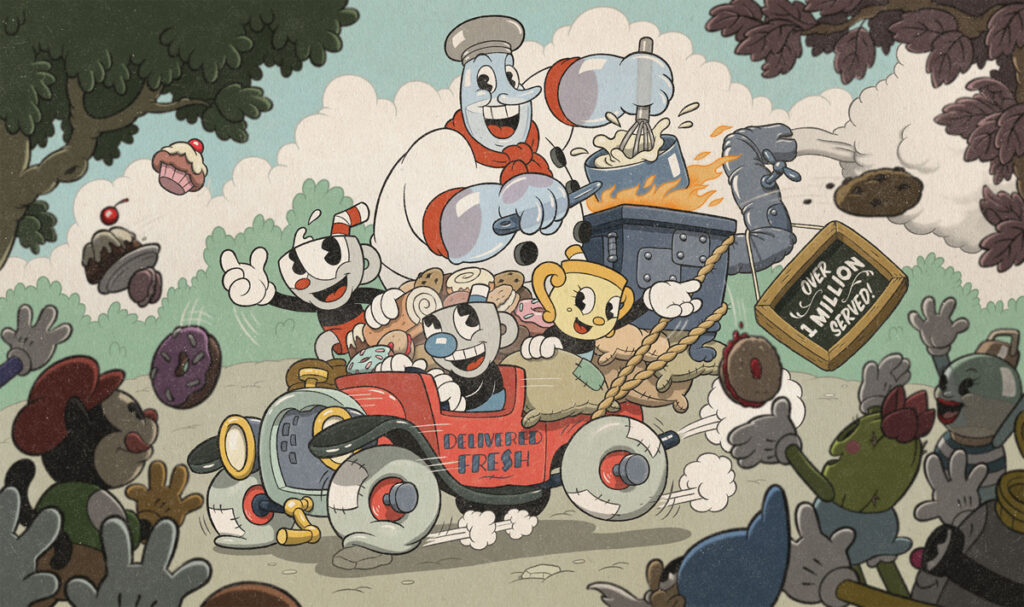
Uncovering the Future of Game Art
In the ever-evolving video gaming industry, new technologies continue to reshape the landscape, bringing opportunities and some degree of uncertainty. However, it is these new advancements that drive innovation and growth among talented artists.
This is why understanding and discussing this year’s direction of game art is so important: to find the right balance between creativity, originality, efficiency and change.
In this interview, our CEO & Co-Founder, Stefano Pinna, shares his insights on the technologies, tools and trends influencing the future of game art based on his personal experiences, while welcoming your perspectives.
Welcome Stefano! Tell us a little bit about yourself and what led you to create Forge Studios.
My career began as a 3D and concept artist, driven by my passion for drawing and games. I even studied comics, illustration and 3D art after school.
After working in outsourcing, a new opportunity came up when a few former colleagues and I decided to start our own studio in 2010. Over time, the team evolved, and Forge Studios has been growing exponentially since 2014.
While we’ve contributed to many incredible projects, creating our own game has always been a dream. Now, that dream is in development. We’ve come a long way, and the best is yet to come!
What a career journey and exciting times ahead! With Forge Studios now working on its own game, how do you see emerging technologies reshaping game art production and pipelines?
We have seen AI and generative tools become increasingly common and used in every aspect of game production — from writing and coding to animation and visuals. They have made it easier and faster to explore new ideas and concepts. By combining these tools with automation, such as procedural texturing and UVs, mesh generation and automated LOD (Level of Detail) reduction, you can streamline your workflow even further.
In addition, Unreal’s Nanite and Meta Human, paired with advancements in hardware and computing power, are allowing incredibly immersive and realistic game worlds. Today, these advancements can move millions of polygons with all sorts of incredible effects in real-time, which was only a dream just a decade ago.
Makes total sense. Do you think more artists will adopt AI and generative tools, or will they be abandoning them?
Many artists will likely continue adopting these tools as they enhance efficiency and reduce costs, allowing them to focus on crafting without being blocked by repetitive manual work.
However, automation often reduces the need for larger teams, which can lead to redundancies. But, with every technological revolution, some roles may disappear, others emerge, requiring new specialists to master these tools. The industry will continue to evolve and adapt.
Interesting. Is there still a role for traditional tools in concept ideation or art direction in game development?
Absolutely! Real media painting, sculpting and paper, even pen and pencils have been around for quite some time, and will be staying with us for much more. However, digital tools do offer flexibility, removing many of the constraints of traditional methods.
For game development, the best tool is the one that accelerates workflows and allows efficient iterations. For concept ideation or art direction, it’s the tool that gives you room to be creative and the most feasible to iterate and collaborate with your team.
Think of titles like Gris from Nomada Studio with its pencil-like strokes, or Cuphead from Studio MDHR with its handmade 40ties-like animation style. Although created digitally, they have a hand-crafted quality, showing that the right approach is the one that brings the artist’s vision most vividly to life.

Gris by Nomada Studio | Image source here

Cuphead by Studio MDHR | Image source here
Can’t agree more. What do you think drives the art direction in video games? How do stylized and realistic art differ here?
Trends often follow successful titles with peculiar aesthetics, influencing the next wave of games. In the last few years, we have seen titles like Overwatch, Fortnite, League of Legends, Minecraft or Hollow Knight becoming the visual inspiration for many projects, and sometimes even the game’s concept.
While it’s rare for a new project to achieve the same level of traction, drawing inspiration can still create valuable associations. Still, uniqueness matters, as repeated use of the same style can become dull. By finding ways to build upon the original aesthetic, a new project can stand out.
While this rings true for stylized art to an extent, this is not the case for realistic art. As Physically Based Rendering (PBR) advances and the use of real-time lighting, ray tracing, and scan data expands across scenarios, characters, and animation, the push for photorealism intensifies. This limits these artists from drawing creative interpretations and stylization.
Moving forward to the role external partners play in game art – in what ways do you see it evolving? Could it mirror the workflow in film production?
With the increase of budgets and production costs for AAA projects, larger studios often face significant risks. If a project fails to hit sales targets, they either have to downsize or shut down entirely.
There are few considerations for why this happens: the game’s theme, genre, and gameplay, in addition to insufficient marketing support, and potential budget mismanagement.
One way to mitigate this is by collaborating with smaller, more agile studios or external partners. They can provide specialists for different stages of development, from concept art to 3D modelling, to animation, sounds and coding.
This setup is very similar to the film industry, where professionals come together to work on a specific project and then move on to the next. This allows the production companies to stay agile and manage multiple projects efficiently. Studios will then have less pressure to immediately jump to the next project. Their core team can focus on working on their next big idea, while their external partner keeps projects moving.
How about asset stores, like Fab by Unreal or Unity Asset Store? How do they impact game art outsourcing studios?
Asset stores have been a game changer for the industry. They made it possible for game studios of all sizes to start their projects faster with ready-made characters, props, effects and animations. Especially, for independent studios, these stores can be a cost-effective alternative to outsourcing.
Although doing so may compromise on originality, not every single game asset needs to be custom. If anything, outsourcing studios can come in for high-quality hero assets or specialised designs. They can also contribute to these stores by creating a library of assets, such as props and environment, to characters, weapons, vehicles and more. However, they should be careful not to overpopulate these stores as it could discourage clients from seeking their services.
Sounds like there’s so much more to unpack here, but we will save it for next time. Thank you for your time, Stefano!
For more information about Forge Studios and the services we offer, feel free to send us an e-mail at business@forgestudios.com and check out our Art Station portfolio here.